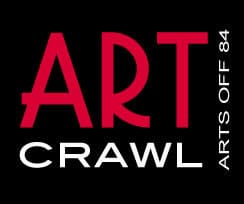THE ART OF POTTERY, CERAMICS & GLASS
Midori Marcum
April Keilen
Tom Daly – Tom’s Aquatic Ceramics
Tom Daly has been working with clay for over 30 years seeking to create pieces that are enjoyable to use and display. His observations of natures’ sights and sounds are an infinite source of inspiration for him. He regularly uses sticks, stones, and other found objects as tools.
Incorporating a mix of hand building and wheel throwing techniques, his work tends to be playful, rhythmic, and organic. Lately, he has been using driftwood and stone as part of certain pieces.
When throwing on the wheel he often pushes the clay to the limits of what it will take without collapsing by stretching, scraping, smearing, smashing, slapping, and slicing. He likes when his work has a good mix of grace and tension, yet he still enjoys making straight up traditional forms.
Some of the glazes he uses are pre-mixed commercial. Others he mixes himself including ash glazes that use clays he has collected from different places in Minnesota. He usually doesn’t worry about glazing till he’s faced with the prospect of doing it. As far as how to do that he lets each piece speak to him. There are certain glaze combinations he’s been doing for years and continues to find ways to vary these. He also is always passively or actively searching for new glazes. He still finds it thrilling to be able to make objects in this wonderful medium that others are drawn to and find comfort in.
Sue & Ross Cornelison
Sue Cornelison is a children’s book illustrator, illustrating many books for children for over two decades. Along with painting and drawing, recently she has rediscovered her love for clay and uses a whimsical approach to her sculptures as well as utilitarian pieces.
She and her husband, Ross, collaborated on creating pull toys this past ‘covid’ year. She designed and painted and he did all the woodworking. Sue also likes to spin wool and creates felt hats and hand bags. Sue and Ross are new to selling their creations but have enjoyed attending the Art Crawl for many years. They have a seasonal cabin and spend their summers in Hackensack MN.
Tanner Talbot – Tanner Talbot Pottery
Tanner Talbott graduated from St. John’s University with degrees in Communication and Art. He started two of his own businesses as a pottery artist and a fishing guide. Tanner grew up living and fishing on the Mississippi River in Minnesota. His work is influenced by his love for fishing, nature, and the outdoors.
In his pottery, Tanner likes to incorporate many aspects of Minnesota including fish, bobbers, bear paws, northern lights colors, and whiskey barrels. He also makes many other items including spatula holders, plate and bowl sets, hand warmer mugs, braided handle mugs, vases, chip and dip bowls/platters, and heart shaped syrup holders. Tanner’s pottery is handmade, thrown on the potter’s wheel, and glazed with many combinations. All of Tanner’s pieces display uniqueness, functionality, and creativity.
Jeff Burger
Over the last decade, Jeff Burger has been working with wood firing in conjunction with soda glazing. Working with forms that range from table tops to kitchenware, he explores the endless variety of surface that wood and soda has to offer. The range of surface and color is compounded by the multiple clay bodies in use at the studio located on the family farm site in northern Minnesota.
Lynn and Deb Barnum – Crabby Sisters – Fused Glass
Deb and Lynn learned the art of fused glass from their father, Pat Barnum. Since then they have enjoyed playing with glass to create functional pieces like bowls and platters to fun pieces like garden stakes, wind chimes and Christmas ornaments. As each piece of glass has its own personality, rarely will two pieces be exactly the same. It’s always fun to open the kiln to find out if a piece turned out as anticipated or did the glass react differently than expected for surprising results.
































